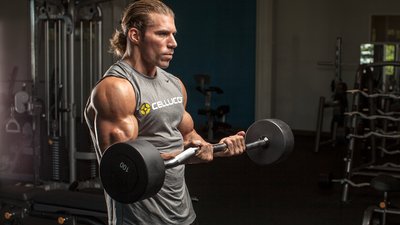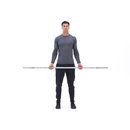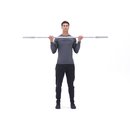The recipe for big arms is simple: curls, curls, curls. So basic, in fact, that it seems impossible to screw up. Yet people do.
If bodybuilding were truly that easy, everyone would have big guns (and I probably wouldn't have a job). Still, the legions of trainees out there find ways to mess things up in the gym, which, thankfully, keeps me employed. I wish I could send a "thank you" card to all of them!
Seriously, though, doing curls for biceps isn't quite that simple. I've spotted nine common mistakes everyone should avoid on biceps day. Address those, and you'll always be on track in your pursuit of sleeve-busting arms.
1. Never Start Your Workout With A Poor Exercise Choice
Are some exercises better than others to begin your workout with? Absolutely! Typically, I'd suggest starting your workout with a multijoint movement. However, that doesn't really apply to biceps training, because even chin-ups work in tandem with your back muscles. The exercise choices are largely restricted to single-joint moves.
Among single-joint exercises you can lift a significantly greater amount of weight on some movements than others. The former tend to be standing, bilateral movements that engage both biceps heads. Very strict isolation exercises, often done seated, are on the opposite end of the spectrum.
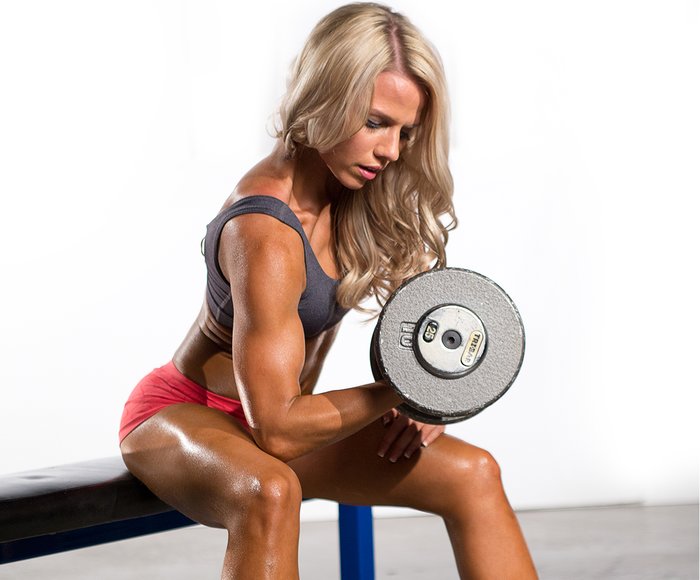
Compare, for instance, the load you use on standing barbell curls versus seated concentration curls. The former makes a terrific first exercise in your biceps routine; the latter doesn't.
Compare, for instance, the load you use on standing barbell curls versus seated concentration curls. The former makes a terrific first exercise in your biceps routine; the latter doesn't. Standing curls allow you to overload your arms with more weight, in part because you can use a bit of body English to keep a set going. Don't go overboard, though, or your form will break down.
After choosing the right exercise, consider the load. After warm-ups, choose a weight that causes failure at 8-12 reps if your goal is to maximize hypertrophy. With the first movement in your workout, you may even want to stay on the lower end of that range.
2. Never Repeat Arm Movements That Are Very Similar
Want to punch the express ticket to limited arm growth? Make all your exercise choices near-repeats of one another.
Let's say your first exercise is the standing barbell curl. Without much thought, you then move on to the standing dumbbell curl with a supinated grip. Hey, why not add a cable move too? So you do two-arm standing cable curls. Barbell, dumbbell, cable. You're mixing it up, right? Wrong.
Do you see the resemblance between all three exercises? They're done with different equipment, but in each one, your hands are in the same position next to your body. Ultimately, that means you're doing 12 sets of movements that are all similar.
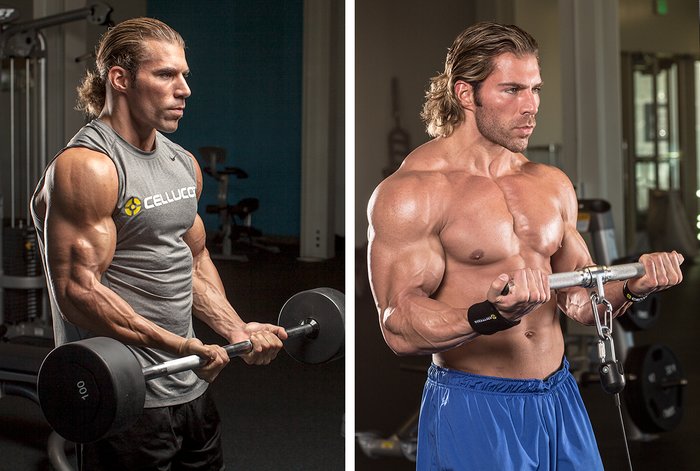
Barbell, dumbbell, cable. You're mixing it up, right? Wrong.
Using various angles in your training—an approach similar to how you train chest with flat, incline, and decline benches—can help increase overall arm development. That opens up plenty of variations for you to explore.
When your arms are in front of the plane of your torso—as when doing preacher curls—the biceps long head can't fully stretch, shifting the focus to the short head. Similarly, when your arms are behind the plane of your body, as when doing incline-bench dumbbell curls, the long head is fully stretched and can contract more strongly, making it the focus of the movement.
Supinating your hands (turning them up as you curl from a neutral hand position) and using multiple arm positions are also effective ways to add variety to your biceps workout.
3. Never Get Locked Into Always Using The Same Grip And Width
Grip width and position can also affect muscle recruitment. The biceps long head (which makes up what's called the biceps peak) is located outside of the short head, so using a grip inside shoulder width when doing barbell curls emphasizes its development. On the other hand, using a grip that's well outside shoulder width will shift some of the focus to the short head. Alternating your grip width from one set or workout to the next will provide a slightly different training stimulus.
And let's not forget about the brachialis, an upper-arm muscle underneath the biceps. Boosting its size will also help increase overall arm girth. Working the brachialis means doing hammer curls, in which your palms face each other in the neutral position. This can be done with a rope attached to the lower cable or using dumbbells.
Hammer curls also target the brachioradialis, which provides thickness to the thumb side of the upper forearm. It's also targeted when using an overhand grip, a movement called a reverse curl. Using all three grips will ensure the most complete arm development.
4. Never Take Your Curls As High As Possible
One of the most common errors lifters make when doing biceps is raising the weight as high as possible in an effort to go through the full range of motion (ROM). I'm all for full ROM training, but in this case, it's often done with an assist from the front delts.
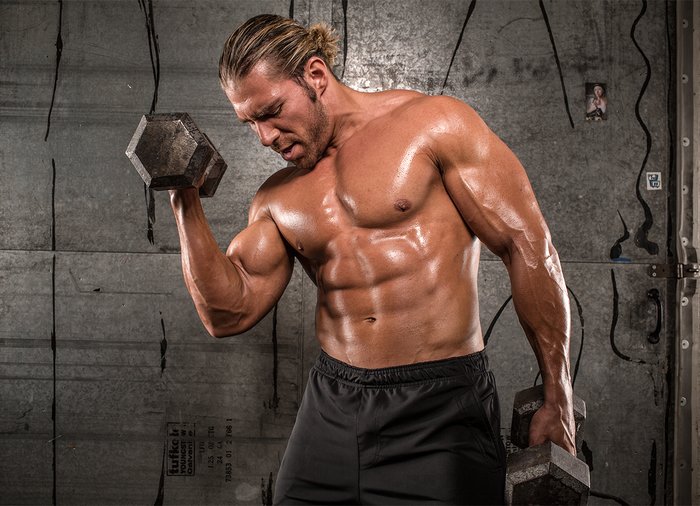
One of the most common errors lifters make when doing biceps is raising the weight as high as possible in an effort to go through the full range of motion (ROM).
That's because the basic curl is done with your elbows pinned by your sides. The motion pivots around just the elbow joints. Curling the weight in this manner allows you to bring the weight to about shoulder height.
In an effort to raise the weight even higher, many lifters push their elbows forward. As soon as they do that, their front delts get into the act. Not only does that bring in another muscle group, it now allows for a resting spot at the top as your hands are stacked over your elbows. Tension on the biceps is highly reduced.
For better isolation, keep your single-joint biceps exercises just that. Be aware of any tendency to pull your elbows forward as you raise the weight. Use any form of cheating selectively to extend a challenging set from time to time, but don't do all of your reps in this fashion.
5. Never Limit Your Range Of Motion Because A Weight's Too Heavy
Increasing your poundage over time is essential for making gains. But too many people go too heavy too soon, and they compensate by shortening their range of motion.
If your primary goal is to continue piling on weight, chances are that this describes you. In your haste to increase the load, you can easily sacrifice range of motion, meaning you end up doing only partial reps, whether it's not fully stretching the biceps at the bottom or taking the movement to the point of peak contraction. In contrast, working through a full ROM promotes more complete muscle development.
The most common error done with curls is with a weight that's too heavy. Often, the eccentric motion is stopped well short of the fully extended arm position, usually leaving about a 90-degree elbow bend or slightly less. If your biceps are still highly bent in the bottom position—check by looking sideways into the mirror—you're not going all the way to full extension.
If this is how you complete most of your curls, simply lighten the weight and be aware of taking each rep to a position in which your arms are almost fully extended to fully contracted. Shortening the ROM of any exercise, not just curls, will limit your overall growth.
6. Never Do Biceps Immediately Before Training Back
With some splits, pull-day muscles (biceps, back) are trained on the same day. Most likely, you arranged the order such that the larger muscle group is worked before the smaller one (back before biceps). The biceps are fairly small, but they're important in rowing and other pulling motions for the back, so you want to fatigue them before hitting the heavy back exercises.
But if you do biceps right before training back—which plenty of folks are guilty of—the arm flexors will be highly fatigued before you do your very first pull-up. On those heavy sets of barbell rows, which muscle group do you think will give out first?
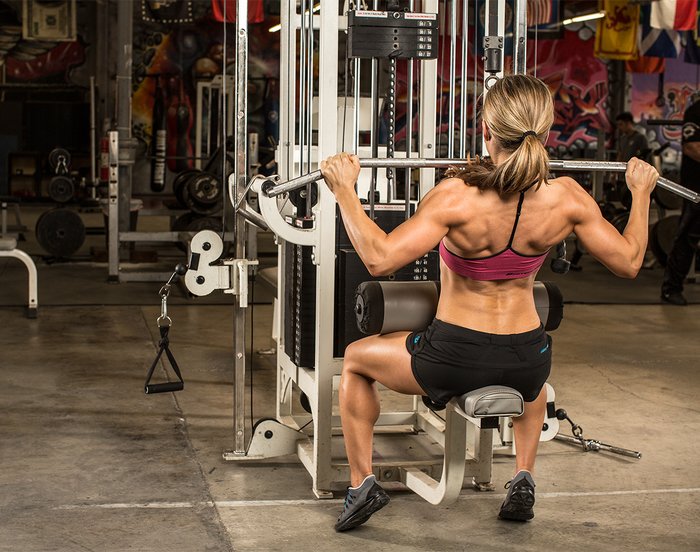
It's best to avoid training biceps within 48 hours of your back workout, so as to not be working biceps on consecutive days.
It's best to avoid training biceps within 48 hours of your back workout, so as to not be working biceps on consecutive days. Remember, a muscle grows during rest, so your training split should be set up such that back and biceps are never worked on consecutive days.
7. Never Start Your Arm Workout With Forearms
Never train forearms before biceps, because those smaller forearm muscles assist on many of your biceps curls. Once you fatigue your forearm muscles, you'll have trouble holding a coffee cup, let alone a piece of gym equipment. Save reverse curls for the tail end of your workout, along with wrist and reverse wrist curls.
In fact, don't do forearms before any major muscle group that requires a strong grip, including back. This is one muscle group that should always be done at the conclusion of your workout.
8. Never Make Up For A Lack Of Intensity By Increasing The Duration Of Your Workout
Who hasn't seen the guy at the gym who spends two hours doing every biceps exercise because, well, he's determined to develop big guns.
Unfortunately, increasing your training volume exponentially hasn't been shown in a single study to be effective if your goal is muscle gain. In a nutshell, more work doesn't mean more gains.
You're better off limiting an advanced biceps workout to about 30 minutes—and even shorter for beginners. But it's not the time limit that's the magic; rather, it's the exercises you choose, sufficient volume, weight and rep ranges, training to failure, post-failure techniques, and rest intervals.
If you can train your arms for longer than 30 minutes (about 12-15 sets), you probably didn't work them hard enough. Focus on generating greater intensity on each set, rather than expecting to simply do more volume to make up for it. The two variables don't trade off.
9. Never Rely Exclusively On Cheat Curls
I could write "use good form when curling" a thousand times, and you'd still probably put too much weight on the bar. So let's talk about cheat curls and how to effectively use them in your workout.
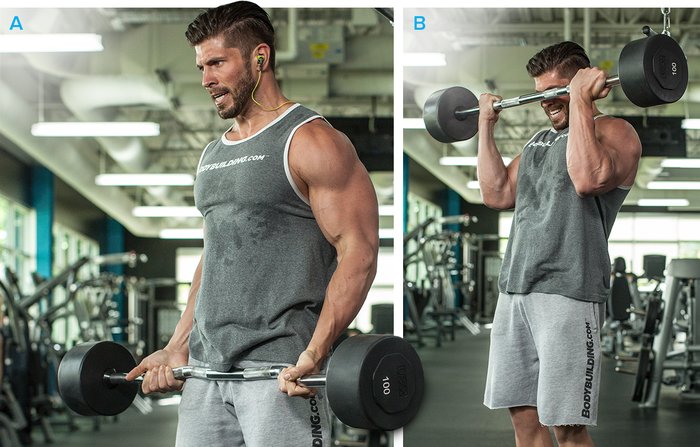
Cheat Curl
A little body English and momentum can help you overcome a sticking point in the curl, which for most of us is about halfway up the range of motion. If you're standing, that's easily generated through your hips to provide a little thrust, which must be increased on each successive rep as you become increasingly fatigued. Remember, though, that using other muscle groups means you're reducing the workload done by the biceps, so you want to minimize it as much as possible.
If you use a weight you can't lift with good form on the very first rep, you're turning a single-joint exercise into a multijoint one right off the bat, which immediately reduces the load that's being applied to the biceps. In this case, it makes no sense to use a heavier weight, because the biceps isn't even capable of handling the entire load for a single rep, meaning your lower back and legs are picking up the difference. More weight simply means more stimulation for other muscle groups.
However, if you can bang out 6-7 reps on your own, and then do just a few cheat reps to help keep the set going, keeping the degree of body swing to a minimum, you'll find that you can safely push past the point where you might have ended your set.
I use the term "safely" loosely because your risk of back injury, and perhaps a serious injury, rises with the degree of cheating. Only more advanced lifters should do cheat curls, and only for a few reps with a controlled amount of cheating.
Here’s a biceps workout including several of the principles outlined above:

BodyFit
$6.99/month- 2,500+ expert-created single workouts
- 3,500+ how-to exercise videos
- Detailed workout instruction
- Step-by-step workout tips
- Training at gym or at home
- Access to Workout Plans
- Access to Bodyfit App
- Store Discounts
Already have a Bodybuilding.com account with BodyFit? Sign In

What comes with BodyFit?

- Instructional Videos
Don't risk doing a workout improperly! Avoid injury and keep your form in check with in-depth instructional videos.

- How-to Images
View our enormous library of workout photos and see exactly how each exercise should be done before you give it a shot.

- Step-by-Step Instructions
Quickly read through our step-by-step directions to ensure you're doing each workout correctly the first time, every time.


